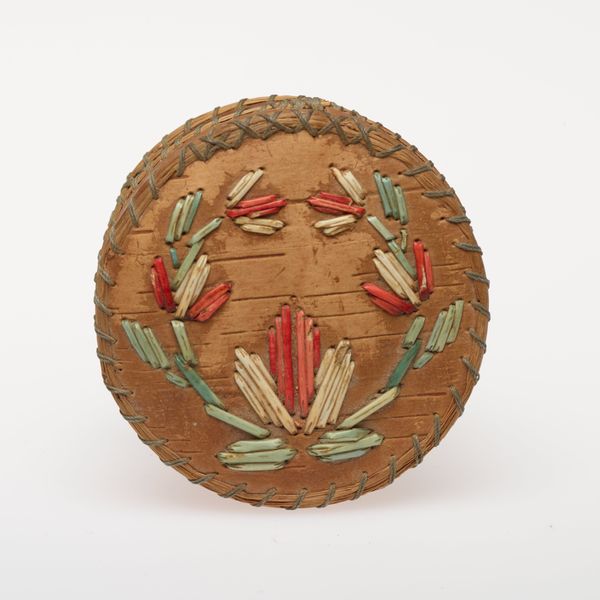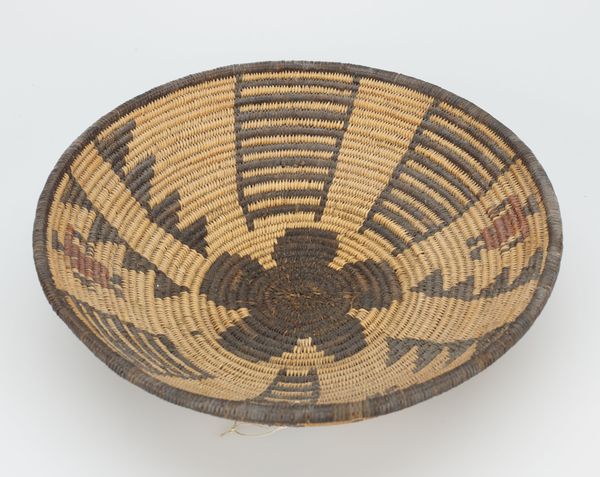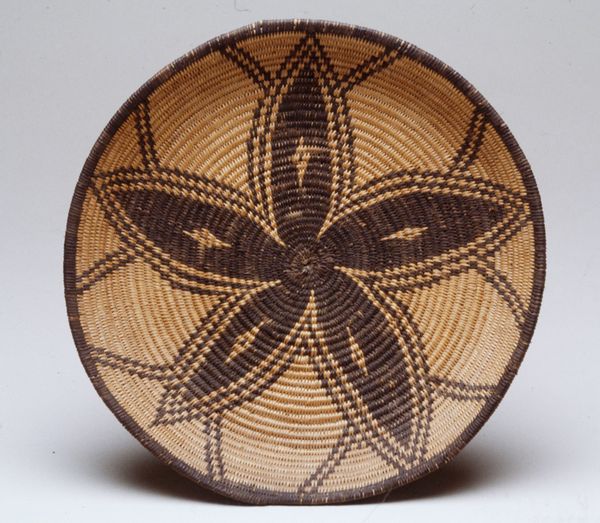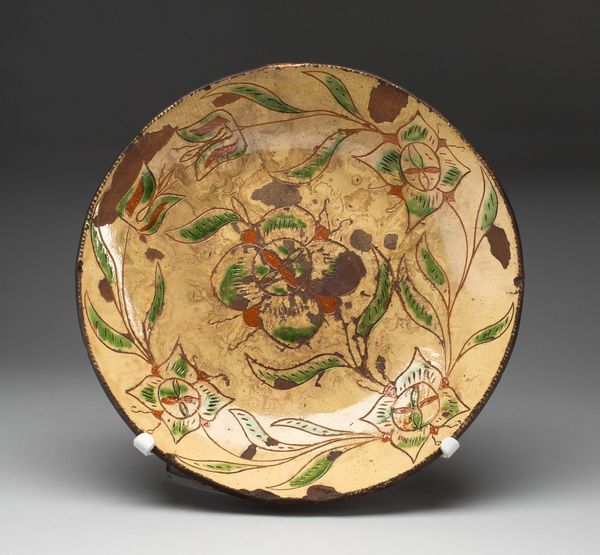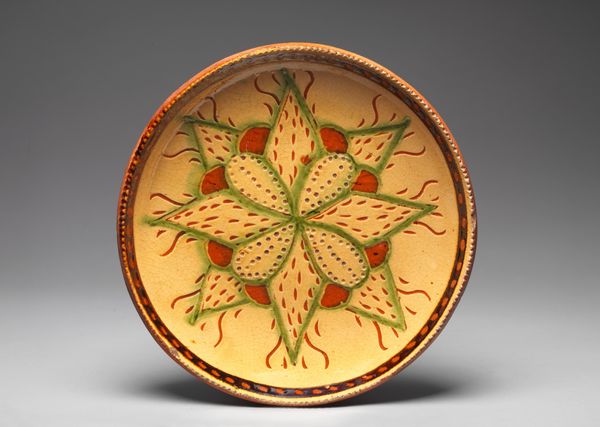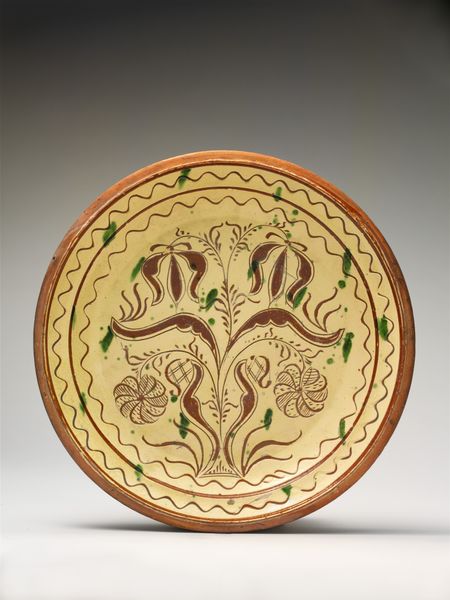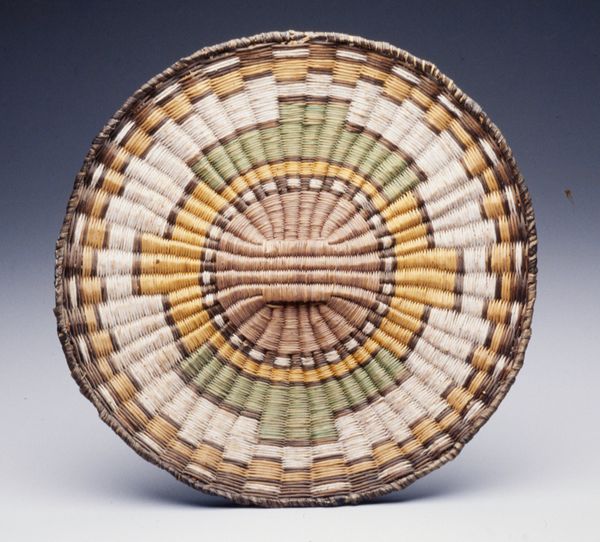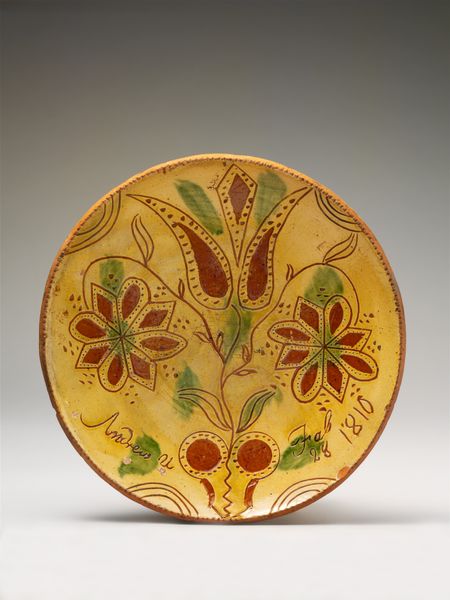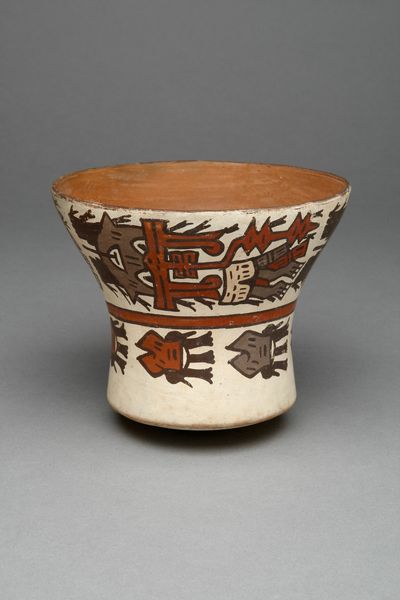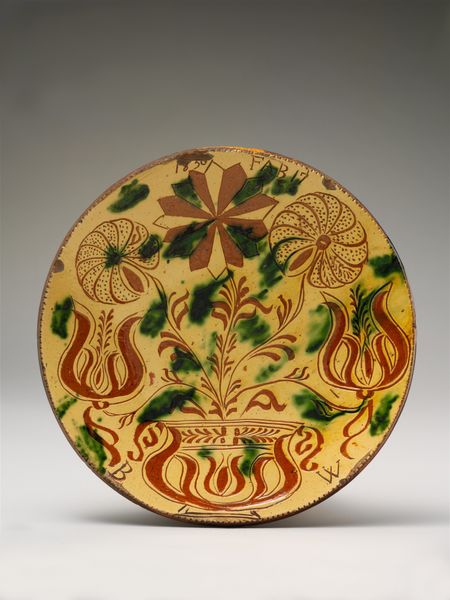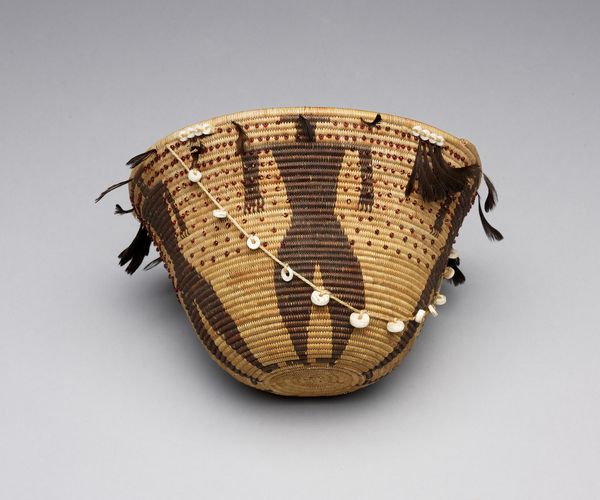
fibre-art, weaving, textile
#
fibre-art
#
weaving
#
textile
#
decorative-art
#
indigenous-americas
Dimensions: 2 1/2 × 5 × 5 in. (6.35 × 12.7 × 12.7 cm)
Copyright: No Known Copyright
Editor: This is a lovely covered quillwork box, dating from around the 20th century, by an Anishinaabe artist. It's made with fibre art, textile, and weaving techniques. It feels very delicate and carefully made. What stands out to you as you consider it? Curator: This piece invites us to consider the complex relationship between indigenous artistry, cultural representation, and the market. It’s important to remember that the Anishinaabe, like many Indigenous communities, have a long and intricate history of creating art both for their own use and for trade. How does the imagery strike you? Editor: I notice the maple leaf and what appears to be a beaver. They feel like they might have particular significance. Curator: Precisely. The presence of the maple leaf, a prominent Canadian symbol, alongside the beaver, evokes questions about nationhood and identity. Considering its creation in the 20th century, one might ask, to whom was this box intended to appeal? And what narratives were being subtly woven, if you will, into the very fabric of this object? Was it crafted for internal use, to reaffirm community bonds, or to cater to the tastes of external consumers, reflecting an engagement with broader Canadian society? Editor: That's interesting. It shifts my understanding of the piece. I hadn't really considered it as a commentary. Curator: It's a testament to how seemingly simple decorative objects can carry significant weight. This box represents a visual negotiation of cultural identity, subtly navigating representation and potential commercial appeal. Understanding its context reframes it, wouldn't you agree? Editor: I do. Seeing it within this broader historical framework provides a richer understanding of the artist's choices and the artwork’s potential impact. I see now how understanding socio-political forces and audience really shapes how we understand this type of piece. Curator: And for me, it reaffirms that we need to see art like this, not as static objects, but as participants in ongoing dialogues about culture, identity, and power.
Comments
minneapolisinstituteofart almost 2 years ago
⋮
Created by Anishinaabe and Inuit fiber artists, this collection showcases the creativity and skill of Native women artists who transform indigenous materials gathered from their homelands into works of art. The technical mastery and ingenuity of these artist appears in the ability to utilize porcupine quills, birchbark, and locally-harvested plant materials to create intricately adorned and finely woven baskets. For more than two centuries, Native women created a market for birchbark containers and baskets to sustain their families during a time of major cultural shifts and external pressures.
Join the conversation
Join millions of artists and users on Artera today and experience the ultimate creative platform.
